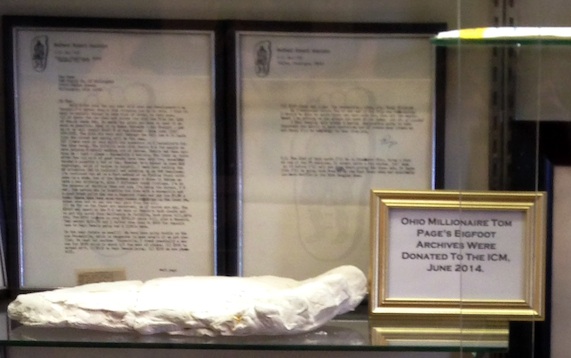![photo[6]](http://www.cryptozoonews.com/wp-content/uploads/2014/06/photo6-1024x483.jpg)
The gun illustrated, unknown to most, is famous for having been instrumental in nearly live-capturing the first Bigfoot.
The Search for Yeti
If you were alive in the 1950s, you may recall that Nepalese search parties felt they were on the verge of obtaining a Yeti. Why would they have such thoughts? Their hopes issued from the seekers knowing the first living giant panda had just been captured a mere 14 years before 1950.
Anthropologist George Agogino summarized this sense of the situation in his introduction to Ivan T. Sanderson’s Abominable Snowmen: Legend Come To Life. In one passage, you will notice these hopeful underpinnings:
In retrospect, the hunt for the Giant Panda serves as an important lesson in regard to animal collecting. From 1869 until 1929, a period of sixty years, a dozen well-staffed and well-equipped professional zoological collecting teams unsuccessfully sought an animal the size of a small bear in a restricted area. During this time not a single specimen living or dead was obtained. The lesson is clear. The Giant Panda lives in the same general area and at the same general elevation (6,000-12,000) as the Yeti, yet this animal remained hidden for over sixty years. The Yeti can well be a similar case. At any rate, one can no longer dismiss the Yeti just because it has eluded moderate search for a single decade. ~ George A. Agogino, 1961.
I propose that another critical point in hominological history occurred right after the October 20, 1967 filming of what appears to be a female Bigfoot at Bluff Creek, California.
Serious, quiet, but well-supported research teams were placed into the field throughout the Pacific Northwest with the thought that capturing a Bigfoot/Sasquatch was within their grasp. I have written extensively about Texas oil millionaire Tom Slick’s pre-Patterson-Gimlin film efforts in this realm, from 1958 until Slick’s death in 1962.
Now, the International Cryptozoology Museum is happy to announce the exhibition of parts of a collection, the complete acquisition of which occurred this spring. We have the Tom Page Bigfoot archives and artifacts. The collection allows us, with a snapshot of the sense of those times, to open a door to the past.
The men using this dart gun, a cap-chur gun, felt they were on the verge of obtaining a Bigfoot. Tom Page bought this gun from the factory. All the paperwork indicates it was sold to Page directly as a “Harrington Richardson 32 gauge special Cap-Chur Powder Projector,” in 1969.
The then-millionaire Tom Page of Ohio supplied this dart gun, the helicopter, the money, and pushed along the search, contractually and in a business-like fashion. This history was almost lost, and we congratulate Tom Page for fulfilling the mission of the Museum with his generous donation of these artifacts (not the helicopter, of course, but much evidence of what he did).
![photo[5]](http://www.cryptozoonews.com/wp-content/uploads/2014/06/photo5-324x1024.jpg)
Tom Page is a name you might not have heard often in the search for Sasquatch. He, however, is one of the quiet supporters of the search for Bigfoot in the late 1960s and early 1970s.

Page contracted services from Roger Patterson and Dennis Jensen – shown above – (not spelled “Jenson,” as in the caption below), followed by a contract and monies going to Peter Byrne, from 1969-1973.

On exhibit, now at the International Cryptozoology Museum, are the cap-chur gun carried by Page, Patterson, and Byrne as they got nearer and nearer to taking down a Bigfoot, scientifically and humanely, for study. It was a “live-capture” approach, not a “kill and prove it” one.

We also have two reels of the extremely rare “Roger Patterson documentary,” which bookends a BBC documentary. The exhibition displays highlights of the Page contracts, casts from that time, the dart gun, photos, and more.

The cap-chur gun, above, and various contracts, below.


The Tom Page collection is highlighted near other Bigfoot material in the Museum.

Follow CryptoZooNews
Not Found
The resource could not be found.